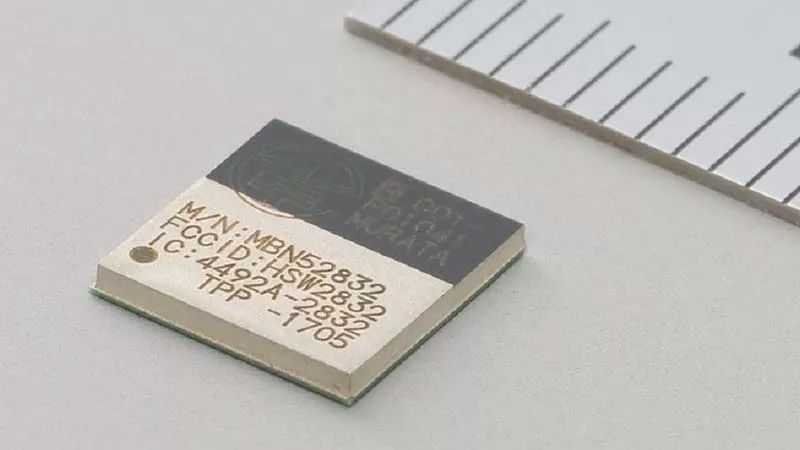By integrating Mesh and Beacon application technologies, the application prospects of BLE technology are vast. Learn more about Murata’s MBN52832 Bluetooth® Low Energy module, which offers high energy efficiency options for your IoT products.
Bluetooth Low Energy technology allows battery-powered products to have longer operational times
Bluetooth Low Energy (Bluetooth® Low Energy, also known as Bluetooth® LE or BLE) is a personal area network technology designed and marketed by the Bluetooth Special Interest Group for emerging applications in healthcare, fitness, beacons, security, home entertainment, and more. Compared to classic Bluetooth, BLE technology aims to significantly reduce power consumption and costs while maintaining the same communication range. Due to its low power consumption, it is often used in various common wearable devices and IoT devices, capable of operating for months to years on button batteries, with small size, low cost, and compatibility with most existing smartphones, tablets, and computers. The Bluetooth Special Interest Group predicts that by 2018, over 90% of Bluetooth-enabled smartphones will support Bluetooth Low Energy technology.
BLE technology has also begun to support Mesh networking, with new Mesh capabilities providing multi-to-multi device transmission and significantly enhancing communication efficiency for large-scale device networks. In contrast to the previous point-to-point (P2P) transmission, where communication networks are formed by two single nodes, Mesh networks treat each device as a unique node within the network, allowing all nodes to connect with each other, expanding transmission range and scale, and enabling devices to communicate with one another. This is applicable for IoT solutions in building automation, sensor networks, and other scenarios requiring multiple, or even thousands of devices, to transmit in a stable and secure environment.
In addition, Bluetooth Low Energy also supports Beacon micro-location technology. In simple terms, a Beacon acts like a lighthouse continuously broadcasting signals. When a smartphone enters the range illuminated by the lighthouse, the Beacon sends a string of codes to the phone. The phone’s app detects the code and triggers a series of actions, such as downloading information from the cloud, launching other apps, or connecting devices. Beacons offer more precise micro-location capabilities than GPS and can be used indoors to clearly identify any mobile device entering the signal transmission range, applicable for digital marketing, electronic payments, indoor positioning, and various other applications.
The MBN52832 Bluetooth® Low Energy module launched by Murata is a product that provides ultra-low power connectivity during data transmission. This module integrates the Nordic BLE chip, RF front-end, and crystal into a very small form factor. It features an ARM Cortex M4 core with 64KB RAM and 512KB flash memory, providing a high-performance engine and rich interfaces for various IoT applications such as sensor networks and device control. This RF-certified module significantly reduces the burden on system designers and helps shorten time-to-market, making it an ideal solution for smart devices, healthcare, and M2M applications.

The MBN52832 Bluetooth® Low Energy module supports Bluetooth® v5, ANT, NFC tags, and features the Nordic nRF52832 Bluetooth Smart® chip in an LGA package measuring only 7.4 x 7.0 x 0.9 mm. It supports on-board PCB antennas and can connect to external antennas via connectors. In antenna port LDO mode, the maximum transmission power is +4.0dBm, with a receive sensitivity of -93dBm @ 1Mbps (LDO mode). The power consumption during transmission is 7mA @ 3.5dBm (DCDC mode) and 6mA (DCDC mode) during reception. The main control interface supports UART, SPI, and includes 20 GPIOs, 5 ADCs, UART, SPI, I2C, PWM, and debugging via SWD, suitable for applications in home automation, proximity services, building automation, healthcare, beacons, and more.
Murata has also launched the MBN52832 development kit, which utilizes the Nordic nRF52 Software Development Kit to accelerate application development speed. The evaluation board supports the same J-Link USB-SWD and USB-UART interfaces provided by the nRF52 development kit to simplify the debugging and development process.
With the vast application opportunities in IoT, combined with application technologies such as Mesh and Beacon, Bluetooth Low Energy technology will see even more robust development, and Murata’s MBN52832 Bluetooth® Low Energy module provides complete functionality and compact size, making it an excellent choice for developing IoT-related products.
This article is reproduced from Arrow Electronics: https://www.arrow.com/zh-cn/research-and-events/articles/bluetooth-low-energy-technology-is-ideal-choice-for-iot
【Vote Your Precious Vote】 Online Survey for Salon Event
Murata is about to take action, can the imbalance of MLCC supply and demand be improved?
LoRa technology writes a new chapter for industrial control and power applications.
Murata Manufacturing Co., Ltd. launches ultra-small metal tag LXMSJZNCMF-198 to assist surgical instrument tracking.
Murata’s dedicated starter kit accelerates the design speed of Nordic RF chip circuits.
LoRa makes smart grids smarter.
A brief analysis of the 148 inspection items in PCB design.
【Video Demonstration】ESD protection device solutions around antennas.
Explaining electrostatic discharge (ESD) protection in detail.
The importance of coupling capacitors in high-speed circuit design.
106 key points summarized in electronic circuit basics, recommended for collection!
High-frequency equivalent circuits and characteristic curves of resistors, capacitors, and inductors.
【Quick Collection】70 types of electronic components and chip packaging types.
Watch the video to easily handle the development of high-quality Wi-Fi audio communication systems.
Automotive R&D: The application and research of power inductors in new energy vehicles!
【RFID Case Demonstration】: Murata’s Osaka distribution warehouse utilizes RFID for free location inventory management systems.
Want to know the manufacturing process of MLCC? Don’t miss the video short.
Changes in Bluetooth 5.0 specifications make physical layer testing more complex.
How is the capacitance of capacitors determined? Do you know?
Precautions for using crystal oscillators.
Detailed explanation of the four main electrical characteristics of MLCC.
Development of automotive and automotive electronic systems – MEMS.
What do you know about the temperature characteristics of capacitor capacitance?
How to use SimSurfing (WEB version).
How to obtain detailed specifications for ceramic capacitors.
【Video】: The decisive factor for communication quality is Murata’s crystal filters.
What are the considerations for substrate pattern formation when mounting chip multilayer ceramic capacitors?
What do you know about hand soldering issues with single-layer ceramic capacitors?
What causes breakage in chip single-layer ceramic capacitors? Do you know?
What issues should be noted when chip single-layer ceramic capacitors are reflow soldered?
To avoid breakage of chip multilayer ceramic capacitors, these installation methods must not be overlooked.

If you want to learn more content, please follow up and feedback to me
